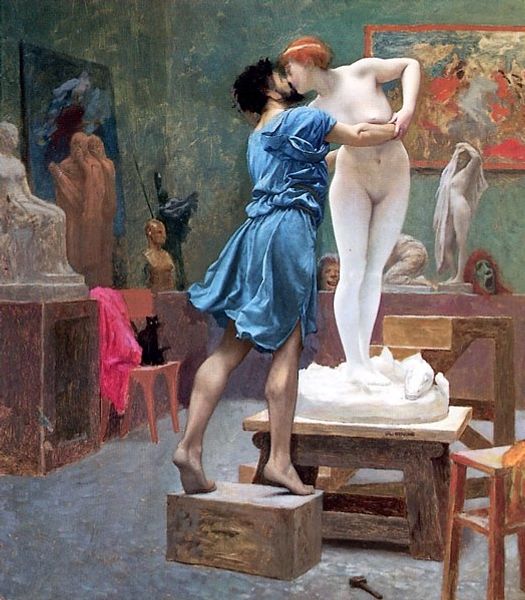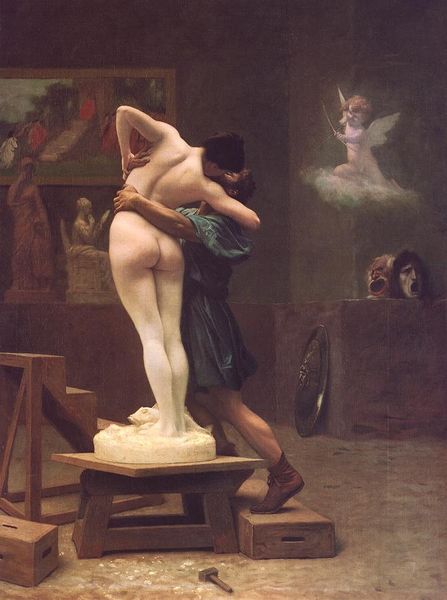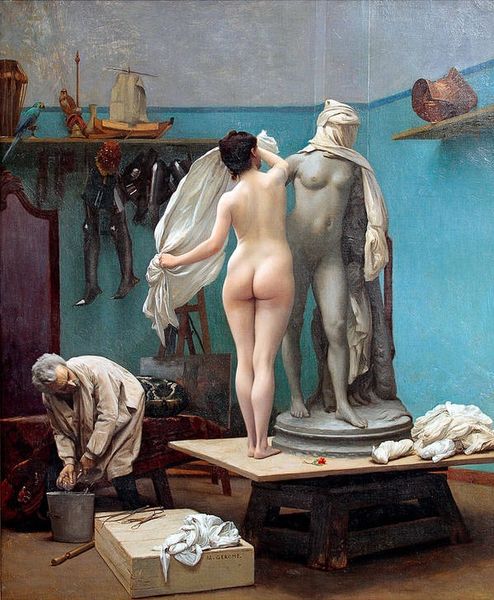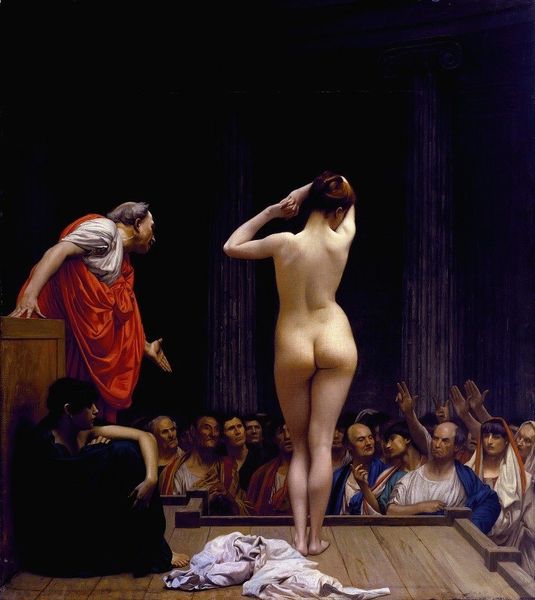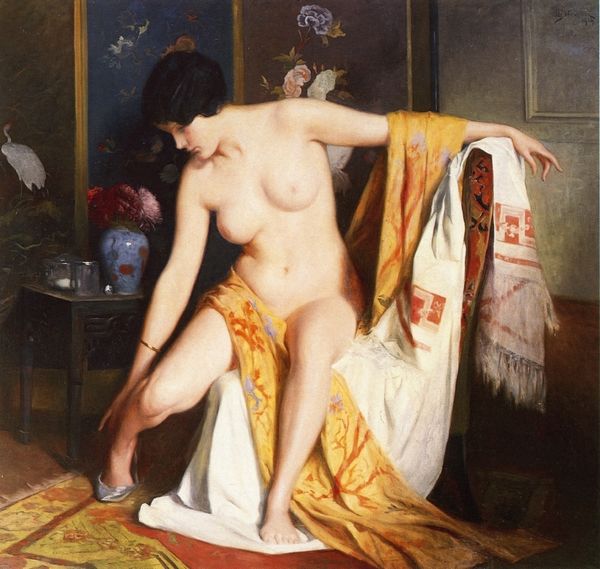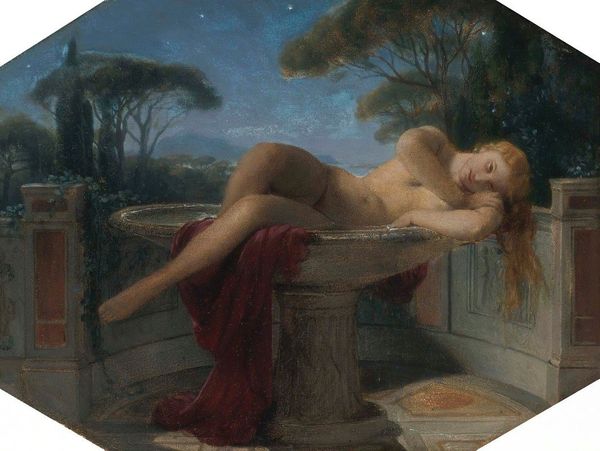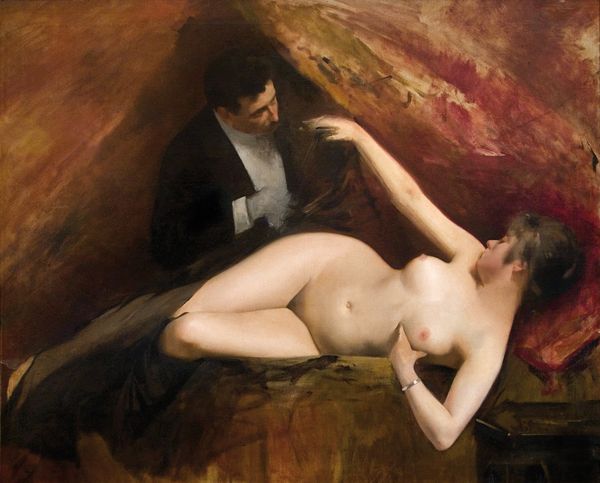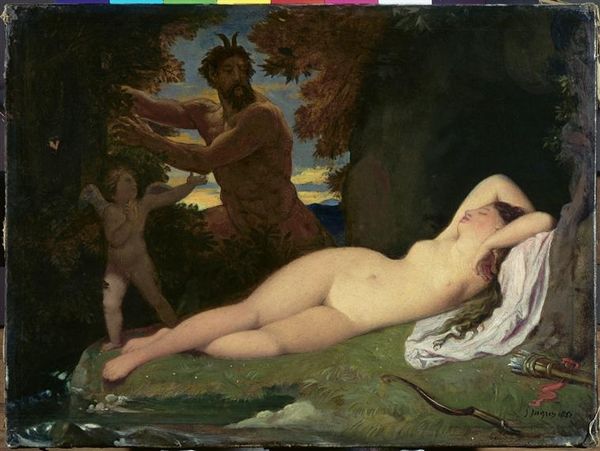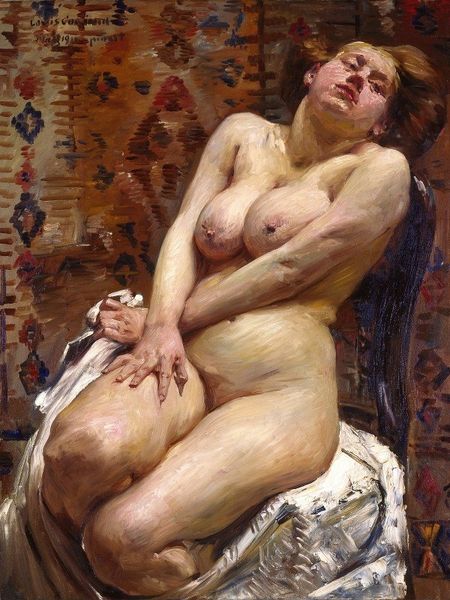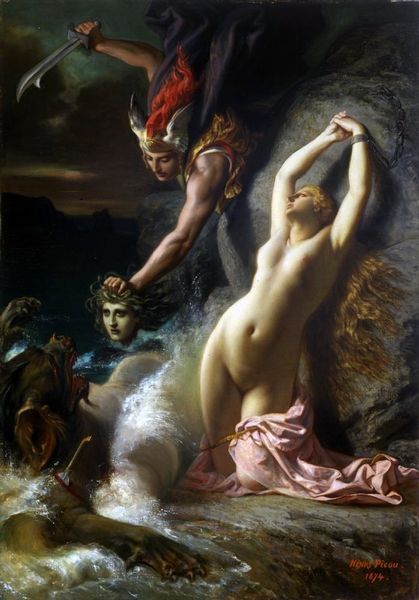
Copyright: Public Domain: Artvee
Curator: Ah, yes, this is Jean-Léon Gérôme's "Pygmalion et Galatée, esquisse à l’huile," painted in 1890. A compelling rendition of a classical myth rendered in oil. Editor: It’s like stepping into a dream. There's a strange mix of cold marble and feverish passion. The way the light catches Galatea... it's breathtakingly sensual, almost unbearably so. Curator: Gérôme, a key figure in the Academic art movement, frequently drew inspiration from classical themes. This piece captures the moment Pygmalion, a sculptor, falls in love with his ivory statue, Galatea, who is then brought to life by Venus. Editor: It makes you think about the blurred lines between creation and obsession. The studio, crammed with sculptures, looks like a mirror of Pygmalion’s own mind – a workshop of dreams and desires. And there’s something incredibly modern about the gaze—the power dynamic... Is Galatea real, or just a figment made flesh? Curator: That’s an insightful take. Academic art often sought to legitimize itself by referencing established narratives and artistic conventions. The tale of Pygmalion provided a framework to explore the creative act itself but also anxieties about the male artist’s power to shape and possess the female form. The setting is very controlled. Editor: Controlled, yes, but also volatile. He is clearly reaching, practically lunging into the space she now occupies... Is he breathing life into her, or trying to possess it? I find it quite disturbing and very of its time! Curator: Well, while the scene brims with undeniable sensuality, we shouldn’t ignore the socio-historical context. The male gaze, power dynamics...all definitely part of this tableau! Editor: Of course. But still... it sparks a disquieting unease. What price does Galatea pay for this gift of life? Is she free, or merely the ultimate object of Pygmalion’s creation, forever defined by his desire? I think of "Frankenstein" here—but that might be a personal reading! Curator: It’s a worthwhile contemplation to close on, regardless. "Pygmalion and Galatea," a masterful technical display with undertones that challenge as much as they charm, ensuring its continued engagement. Editor: Agreed. And ultimately, that tension, between beauty and unease, makes it all the more fascinating, doesn’t it?
Comments
No comments
Be the first to comment and join the conversation on the ultimate creative platform.
